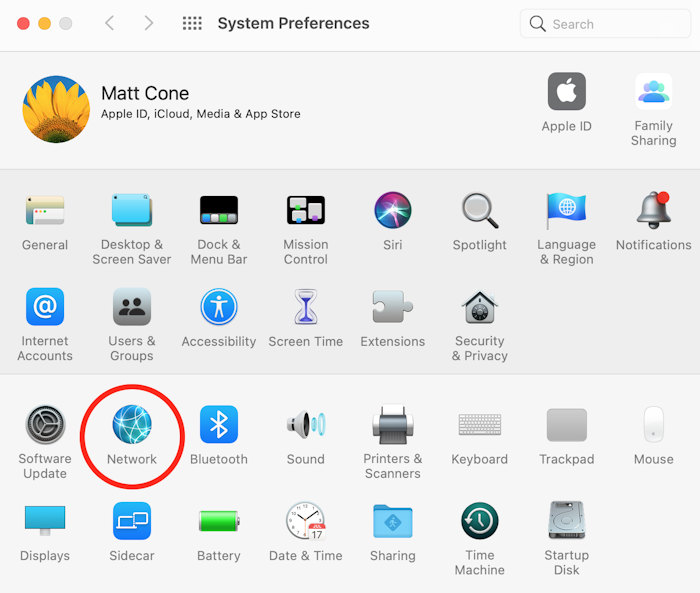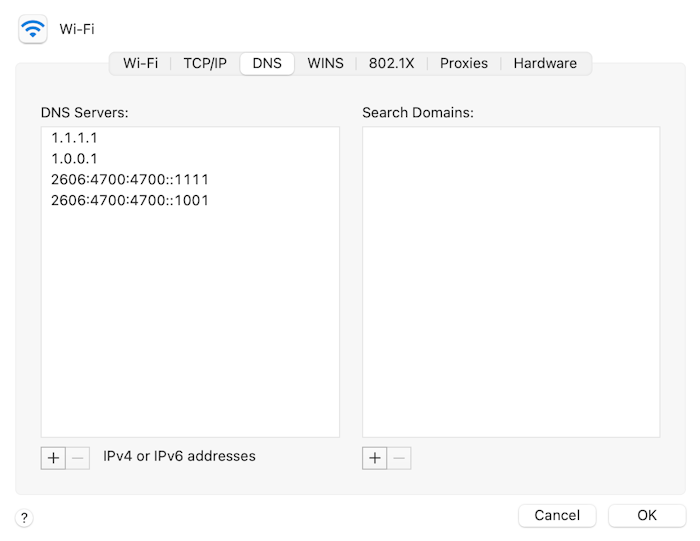How to Change Your Mac's DNS Servers
Matt Cone January 4, 2021 Tutorials Mac Network
Your Mac uses something called the Domain Name System (DNS) to access websites. It’s a system invisible to you, the user, and most people don’t even know it exists. But if the DNS servers you’re using are slow or unavailable, websites will load slowly or won’t load at all. That’s why it’s important to learn about DNS and consider changing your DNS servers. In this tutorial, we’ll show you everything you need to know about DNS to speed up surfing and ward off potential problems.
DNS Crash Course
To understand how DNS works, you need some background information. Every website connected to the internet is assigned something called an IP address, which is similar to a home’s street address. Just like a friend could find your house if she had your address, your Mac can load a website if you type its IP address in a web browser.
The problem is that IP addresses can be difficult to find and remember. DNS was created to map memorable domain names, like cnn.com, onto IP addresses, like 151.101.65.67, which is the CNN website’s IP address.
When you type in a URL in to your web browser’s address bar and press Return, your Mac contacts a DNS server to find the IP address associated with the domain name. DNS is essentially a directory of all the websites in the world. Imagine a giant phone book with the IP addresses for all of the websites on the internet. That’s DNS.
Why You Should Change Your DNS Servers
Every internet service provider operates their own DNS servers. When you purchase internet access from a company like Comcast, your Mac will automatically use Comcast’s DNS servers. That’s not a problem unless the service provider’s DNS servers become unavailable. At that point, your Mac won’t be able to load any websites.
Fortunately, there are other companies out there that offer free DNS servers that you can use with your Mac. Many of these services are faster, and some companies have never experienced a service interruption. Plus, some DNS providers offer additional services for free, like malware and privacy protection and parental controls.
Selecting Another DNS Provider
There are dozens of free DNS servers out there. How do you know which ones to use? We’ll make it easy for you. The two best DNS services are Cloudflare DNS and Google Public DNS, both of which are free, fast, and reliable.
Cloudflare prevents you from accessing webpages that are known to host malware that could harm your Mac. If you’re concerned about privacy, you can install the Cloudflare WARP apps on your Mac and other Apple devices to encrypt and force all requests through Cloudflare’s DNS servers — even the ones originating from deep within the applications on your devices. Google’s service “never blocks, filters, or redirects users,” which is great for users who just want the unfiltered Internet in all its glory.
Changing Your Mac’s DNS Servers
Once you’ve settled on a DNS service provider, it’s time to update your Mac’s DNS servers. Here’s how:
From the Apple menu, select System Preferences. The window shown below appears.

Click Network. The window shown below appears.

Select a network interface from the sidebar. By default, your primary network interface is selected. If you use more than one interface to connect to the internet, use these instructions to update the DNS servers for all of the interfaces.
Click Advanced.
Click the DNS tab. The window shown below appears.

Click the + button to add a new DNS server.
- To use Cloudflare DNS, use the following DNS servers:
1.1.1.11.0.0.12606:4700:4700::11112606:4700:4700::1001
- To use Google DNS, use the following DNS servers:
8.8.8.88.8.4.42001:4860:4860::88882001:4860:4860::8844
- To use Cloudflare DNS, use the following DNS servers:
Click OK.
Click Apply.
That’s it! You’ve updated your Mac’s DNS servers!
Related Articles
- How to Change Your iPhone’s DNS Servers
- How to Change Your iPad’s DNS Servers
- Change an AirPort Extreme’s DNS Servers
- How to Find the Best DNS Servers
- How to Check Your Mac’s Network Quality
Subscribe to our email newsletter
Sign up and get Macinstruct's tutorials delivered to your inbox. No spam, promise!